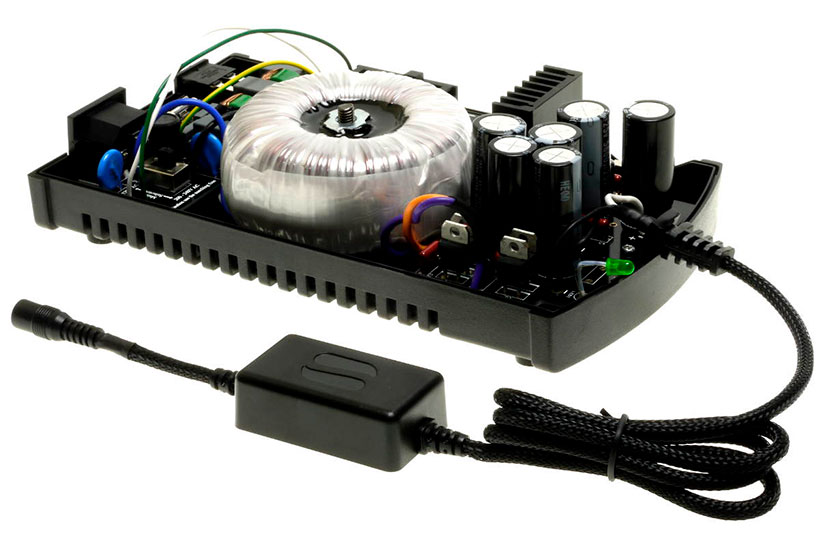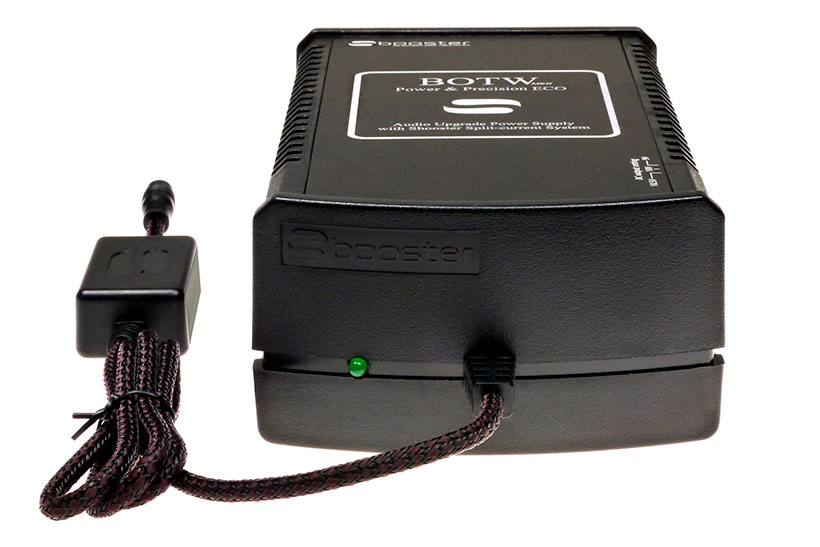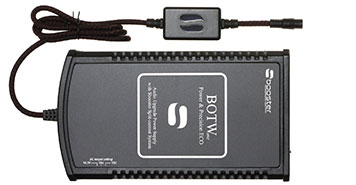The power supply is a fundamental part of any piece of electronics, not least audio components where the quality of the power supply has a direct influence on the sound quality produced. An amplifier for instance uses electrical power to increase the strength (voltage) of a signal to the point where it can drive a loudspeaker, the power supply (PSU) is what turns the raw electricity from the mains into the correct voltage to run a piece of equipment and irons out as much of the noise on the mains signal as it can. That’s why so many manufacturers offer power supply upgrades, changing this key element changes the performance capability of the audio component.
Not all manufacturers make better power supplies for their products and for this reason there are now several third party companies producing improved power supplies for a variety of components. One of those is Sbooster from the Netherlands, we tested one of their BOTW supplies on an Auralic Aries streamer a couple of years ago and have recently had the opportunity to try one on a Melco network server.

The N100 is the least expensive music server in the Melco range, it’s a half width device with all the usual network and audio connections that has a 12V power supply in a separate block in the power cable. This means that it’s easy to substitute a different supply, products which have IEC inlets for a 240V connection directly to the mains cannot be so easily upgraded unless the manufacturer is providing a new PSU. The supply that Melco provides is a switching type because such things are less expensive than the linear alternative such as the Sbooster where a mains transformer is used. Linear PSUs are not intrinsically superior to switching types, Linn and Chord Electronics both put them in their best amplifiers, so this is about quality rather than technology. Although tech naturally plays a part, a power supply is more than a transformer in a box.
The Sbooster Best of Two Worlds Power & Precision ECO not only has an excessively long name but is available with a range of output voltages and comes with a selection of different plugs to fit the inlets of virtually any audio or video product that has an external power supply. The MkII version tested here has a number of upgrades over its predecessor including a high quality PCB, upgraded wiring, electrostatic and magnetic shielding on the transformer and a new output cable with extra shielding. Essentially it has been revamped to deliver cleaner power with a lower output impedance which means the juice is there when it’s needed and the supply isn’t struggling to keep up.

The Sbooster I tried has three alternative voltage settings 12V, 13V and 13.5V with a maximum current of 3A but the BOTW P&P ECO is supplied in ratings from 5V to 24V and come with a eight alternative plugs for different inlet sizes. They appear to be compatible with just about any audio component that has an external low voltage PSU, there is a list of products with relevant Sbooster supplies on the site but I suspect it’s not exhaustive. The various plugs have been custom made for the MkII BOTW supplies and connect to the outlet cable from the supply with a two pin connector that feels reassuringly firm
With the Melco N100 connected to a DAC via USB the benefits of switching from the supplied PSU to the Sbooster were obvious. The sound opened up so that the instruments and voices had more space to unfold, there also seemed to be an increase in contrast between louder and quieter sounds, greater dynamic range essentially, and with a live recording the sense of vitality and energy clearly increased. Timing also improved, probably because the contrast mentioned was also tonal, greater differentiation of higher notes means better definition of leading edges that gives music its impetus. The other key underpinning factor is that low level details, the quieter sounds, are easier to hear and understand. You can tell what the instruments making those sounds are doing in the context of the overall musical flow, ultimately it comes down to more coherent information making the music clearer and easier to follow.

With a piece of chamber music the extra openness that the Sbooster reveals means you can hear more of the ambiance from the venue and the cleaner presentation made the original instruments sound more natural and less, for want of a better word, scrapey. Playing the heartbeat on Dark Side of the Moon resulted in more solid and textured bass and more refined highs, cymbals sounded much more like cymbals with the Dutch supply. It’s a bit like jumping to a higher res recording format, like going from 16/44.1 to 24/96. So quite a clear upgrade for what seems like a reasonable price.
I also tried the Sbooster on my Vodafone broadband router which is also a 12v device and usually runs on a cheap switched mode supply (from Huawei no less). Replacing that with the linear supply made a clear and positive difference when streaming Qobuz and Tidal music services. It didn’t make those services sound as good as the Melco but it’s good to know that they can be improved in terms of clarity and definition, if streaming from external servers is your preferred listening mode then this sort of upgrade is definitely worthwhile.
There are plenty of aftermarket power supplies on the market but the Sbooster models are well made, sensibly priced and provide an alround benefit to the components I’ve tried them with, an upgrade that it would be hard to achieve without upgrading to a more expensive server in this instance.
Price: €329
Sbooster


